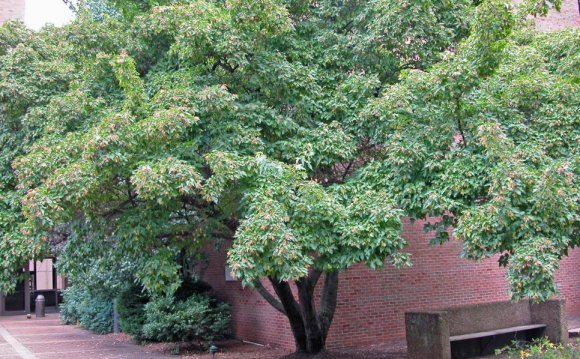
Every kind of cultivated tree has assets that suit it for some landscape use. Each also has certain requirements critical to its survival in the yard. Some are more cold-hardy than others, so check their Zone rating for hardiness. Many do best in rich, moist, woodsy soil that's on the acid side. Others prefer more alkaline soil that tends to be dry because it's not as rich in moisture-holding organic matter. Some trees, like swamp red maples and bald cypress, can handle truly wet soil.
Trees also have their liabilities. Some have thorns that make them unsuitable for homes with children. Others are weedy. Some are messy - sycamores and relatives of the London plane tree drip fuzzy balls, bark, and twigs all over the place. The spiked balls from sweet gum trees and the runaway roots of willows present challenges as well. However, if you choose the right place for some of these less-desirable varieties, you often can overlook their faults and enjoy their virtues instead.
Littleleaf lindenA small tree is not always a young tree. If it's small from lack of vigor, the condition of its bark will give it away. A weak one will have thicker bark that's textured with ridges, furrows, or flakes, rather than the smooth, tender bark of youth.
Certain trees are more tolerant of typical urban conditions, such as atmospheric pollutants from industry and cars, compacted soil, poor drainage, night lighting, and salt spray from snow plows. Typically, city trees have much shorter lifespans than their suburban or country counterparts. Those that do best are Norway maple, oak, Washington hawthorn, ginkgo, honey locust, sweet gum, crabapple, linden, and zelkova.
Callery pear.Callery pear (Pyrus calleryana) is fast-growing and has small, white flowers in the spring and colorful foliage in the fall. Its pyramidal canopy reaches 30 to 45 feet at maturity. Early versions called Bradford tend to split in storms, so choose 'Aristocrat' or 'Chanticleer.' Zones 5-8.
Learn more about ornamental pear trees.
Crabapple.Crabapple (Malus) grows 15 to 25 feet tall and is covered in spring with deep pink flower buds that become white blossoms. In turn, the flowers give way to small red or yellow apples that birds love. The tree spreads to an irregular shape. Zones 3-8.
The best crabapples for your yard.
Learn more about crabapples.
Chinese dogwood.Chinese dogwood (Cornus kousa chinensis) has white spring flowers with pointed petals. Dangling, fleshy red fruits hang from its distinctly horizontal branches in fall. Zones 3-8.















